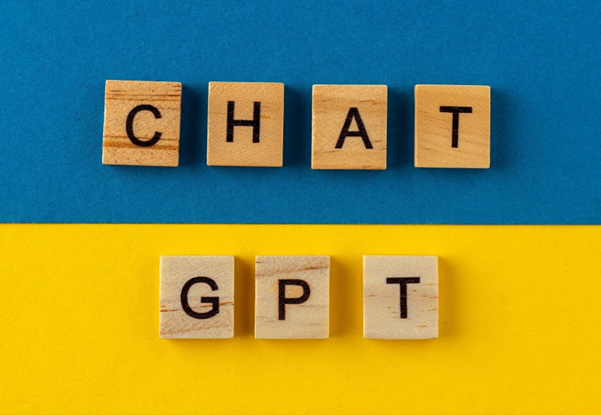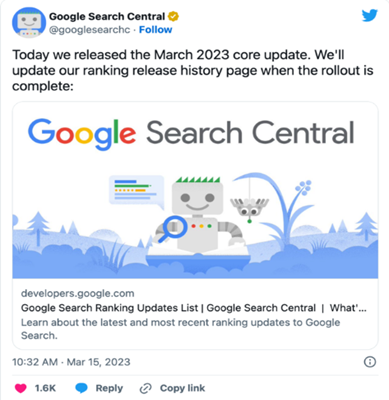Today, growth marketing has become a bit like trying to hit a bullseye with a blindfold on: you know what you’re aiming for, but you can’t see where you’re going. So relying on traditional growth marketing methods like email blasts, generic ads, and cold calls can be ineffective and costly. For example, email blasts and cold calls may reach a large number of people, but they often lack personalization and fail to engage potential customers. Similarly, generic ads may catch the eye of some customers, but they may not be relevant or useful to the majority of the target audience.
Companies need to be able to quickly and accurately identify potential customers, engage with them in a meaningful way, and retain them for the long term. However, the challenges of inaccurate targeting, limited resources, and increased competition can make it difficult for companies to achieve their growth marketing goals. But what if there was a way to improve targeting, engagement, and retention through a more personalized and scalable approach? Enter ChatGPT, a language model based on GPT-3 architecture.
ChatGPT has the potential to revolutionize growth marketing strategies by leveraging its natural language processing, machine learning, and scalability capabilities to unlock its full potential. In this blog post, we’ll explore how ChatGPT can disrupt growth marketing and how companies can use it to optimize their campaigns for maximum efficiency and personalization.
What are the Capabilities of ChatGPT?
As an advanced language model based on the GPT-3.5 architecture, ChatGPT possesses a range of capabilities that make it useful for a variety of applications.
- Natural Language Processing

Natural Language Processing (NLP) is a field of artificial intelligence that enables machines to understand and process human language. ChatGPT’s NLP capabilities allow it to comprehend and generate text in various languages, including English, Spanish, French, German, and more.
What makes ChatGPT stand out is its ability to understand human language in different forms, including slang, idioms, and colloquialisms. This means that you can communicate with ChatGPT in a natural and conversational way without having to worry about using formal language.
For example, if you ask ChatGPT, “What’s the tea?,” it will recognize that you’re not asking about a beverage but rather some gossip or news. This is because ChatGPT is trained on a massive dataset that includes a diverse range of language forms and contexts.
ChatGPT’s NLP skills are not limited to understanding the text. It can also comprehend and generate speech, making it a versatile tool for various applications, such as voice assistants, chatbots, and language translation tools.
- Machine Learning – Backbone of ChatGPT

This language model is always improving its responses and getting smarter with every interaction. Machine learning is the backbone of ChatGPT’s ability to provide accurate and relevant answers to user queries. As users engage with ChatGPT, it analyzes their input and uses the data to identify patterns and trends. This process enables ChatGPT to learn from its mistakes, correct them, and improve its responses over time.
Here’s an example: Let’s say ChatGPT receives frequent questions about a particular topic, such as “How do I bake a cake?”. With machine learning, it’ll learn to prioritize that topic and provide more detailed responses that are tailored to the user’s needs. In this case, it may provide a step-by-step recipe or suggest relevant videos to watch.
The more interactions ChatGPT has, the better it gets at predicting user intent and providing accurate responses. This means that ChatGPT can adapt to new situations and respond to users’ changing needs in real-time.
- ChatGPT Offers Personalization

Personalization is a crucial aspect of ChatGPT’s capabilities. By analyzing data from your previous interactions, it can learn about your preferences, interests, and needs. This enables ChatGPT to provide personalized responses that are tailored to your specific requirements.
For example, if you’re an avid sports fan and you often ask ChatGPT about sports-related news, it’ll remember and store this information. The next time you engage with ChatGPT, it will use this data to provide you with more personalized responses about sports, such as the latest scores or upcoming games.
This level of personalization makes interactions with ChatGPT feel more natural and less robotic. It’s like having a personalized assistant who knows you well and understands your preferences.
- ChatGPT is Scalable

ChatGPT’s scalability is one of its most impressive capabilities. It can handle multiple interactions at once, making it a valuable tool for businesses that need to provide support for large volumes of requests.
Scalability is essential for any language model that aims to provide support across various platforms and devices. ChatGPT can be deployed on websites, messaging platforms, and other digital channels to provide instant support to users.
For example, let’s say a company deploys ChatGPT for customer service. If there’s a surge in inquiries from customers, ChatGPT can handle multiple interactions simultaneously without breaking a sweat. This means that customers can get the support they need quickly and efficiently without the need for additional human support.
ChatGPT’s scalability also ensures that it can handle a high volume of requests without compromising the quality of its responses. Whether it’s handling a few interactions or thousands, ChatGPT can provide accurate and relevant responses in real time.
What are the Challenges of Growth Marketing?
Growth marketing is an essential aspect of any business that aims to achieve sustained growth and success. However, like any other marketing strategy, growth marketing strategies come with their challenges. Let’s take a closer look at some of the challenges of growth marketing:
- Inaccurate Targeting

One of the most significant challenges that growth marketers face is identifying and accurately targeting potential customers. Accurate targeting is crucial for the success of marketing campaigns since it ensures that businesses are investing their time, money, and resources in reaching the right people.
Inaccurate targeting can lead to significant losses for businesses, including decreased ROI, low conversion rates, and a damaged reputation. This is because when a business fails to target its audience correctly, it can come across as tone-deaf or irrelevant, leading to customers ignoring or disliking the marketing message.
- Ineffective Communication

Another common challenge in growth marketing is that businesses may not be communicating the right message effectively to their target audience. This can happen for a variety of reasons, such as a lack of understanding of the audience’s needs and desires or using industry jargon that the audience doesn’t understand.
For instance, a business may have a product that solves a specific pain point for its target audience, but if the messaging doesn’t clearly communicate how the product can solve that problem, the audience may not be motivated to take action. Similarly, if the messaging is too vague or generic, it may fail to capture the attention of the audience.
- Limited Resources

Limited resources are a common challenge for many businesses, especially for startups and small businesses. These businesses often operate on a tight budget, which can make it challenging to invest in marketing efforts that can help drive growth.
One type of marketing that requires significant resources is growth marketing. Growth marketing is a strategy that focuses on generating sustainable and scalable growth for a business. It typically involves a combination of tactics such as customer acquisition, retention, and activation.
To successfully execute a growth marketing strategy, businesses need to invest time, money, and manpower. For example, businesses may need to allocate funds for paid advertising campaigns, invest in marketing automation software, and hire skilled marketing professionals.
Time is also an important resource for growth marketing. Building a strong online presence and developing a brand takes time, as does creating content and building relationships with customers. Marketing teams need to be dedicated to the process of growth marketing and must commit to ongoing efforts to achieve success.
Manpower is another resource that is critical for growth marketing. A dedicated marketing team or at least one marketing professional is often required to execute a growth marketing strategy effectively. These individuals need to be knowledgeable in various marketing channels, tools, and techniques, including social media, email marketing, and search engine optimization.
- Increased Competition

As growth marketing becomes increasingly popular among businesses, competition in the market is becoming fiercer. To succeed, businesses must be creative and innovative in their marketing strategies to stand out from the crowd. This involves understanding the latest marketing trends, staying on top of consumer behavior, and creating unique and compelling marketing campaigns.
Adapting marketing campaigns is also crucial to stay ahead of the game. As the market evolves, consumer behavior changes and new trends emerge, businesses must be able to adapt their marketing strategies to stay relevant. This requires a deep understanding of market trends, and many businesses fail at it.
By understanding these challenges and developing effective strategies to overcome them, businesses can create successful growth marketing campaigns that drive revenue and business growth.
Comparison with Traditional Growth Marketing Campaigns
Traditional growth marketing strategies usually involve reaching out to potential customers through various channels such as email, social media, and advertisements. These strategies require a lot of effort and resources to create and execute, and their success often depends on the quality of the target audience and the timing of the messaging. On the other hand, ChatGPT is an AI-based solution that can provide personalized conversations and recommendations to customers at scale, with the potential to increase efficiency, personalization, scalability, optimization, and cost-effectiveness.
Here is a comparison of ChatGPT with traditional growth marketing strategies based on the parameters mentioned:
- Efficiency: ChatGPT can provide real-time responses and personalized conversations to customers, which can increase the efficiency of customer engagement. Traditional marketing strategies, on the other hand, require a lot of effort and resources to create and execute campaigns, and their success often depends on the quality of the target audience and the timing of the messaging.
- Personalization: ChatGPT can provide personalized recommendations and conversations to customers based on their preferences and behaviors. This can help increase customer engagement and loyalty. Traditional marketing strategies can also provide personalized messaging, but the level of personalization may not be as high as that of ChatGPT.
- Scalability: ChatGPT can handle a large number of customer conversations simultaneously, which makes it highly scalable. Traditional marketing strategies, on the other hand, may require a lot of resources to scale campaigns to a larger audience.
- Optimization: ChatGPT can learn from customer conversations and feedback to continuously optimize its recommendations and responses. This can help improve the effectiveness of customer engagement over time. Traditional marketing strategies may also be optimized, but the process can be time-consuming and resource-intensive.
- Cost-effectiveness: ChatGPT can be a cost-effective solution for customer engagement as it requires fewer resources and can handle a large number of conversations simultaneously. Traditional marketing strategies may require a lot of resources and may not be as cost-effective as ChatGPT.
| Parameters | ChatGPT | Traditional Growth Marketing Strategies |
| Efficiency | Provides real-time responses and personalized conversations with customers. | Can require a lot of effort and resources to create and execute campaigns. |
| Personalization | Can provide highly personalized recommendations and conversations based on customer preferences and behaviors. | Can provide personalized messaging, but the level of personalization may not be as high as ChatGPT. |
| Scalability | Highly scalable and can handle a large number of customer conversations simultaneously. | May require a lot of resources to scale campaigns to a larger audience. |
| Optimization | Can continuously optimize its responses and recommendations based on customer feedback and interactions. | Can also be optimized, but the process may be time-consuming and resource-intensive. |
| Cost-effectiveness | Can be a cost-effective solution for customer engagement, as it requires fewer resources and can handle a large number of conversations simultaneously. | May not be as cost-effective as ChatGPT and can require a lot of resources. |
Final Words
ChatGPT is already transforming the growth marketing arena by providing marketers with powerful tools to generate high-quality content, personalize messaging, provide efficient customer support, and leverage predictive analytics. As an AI-powered language model, ChatGPT has the ability to process and analyze large volumes of data and generate human-like responses, making it a valuable tool for marketers seeking to improve their marketing strategies.
To leverage ChatGPT effectively, marketers should identify specific use cases, provide clear prompts, monitor performance, and use it in conjunction with other marketing tools and strategies. By understanding how to leverage ChatGPT, marketers can stay ahead of the curve and drive growth for their brands.



